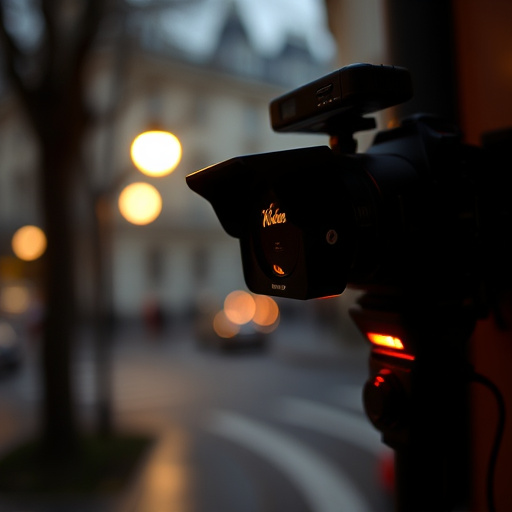Electromagnetic signals from phones, power lines, and Battery Operated Hidden Childcare Cameras enable covert video and audio surveillance. Detecting these hidden cameras requires understanding common signal frequencies and using specialized EMF detectors or frequency scanning tools. Enhanced security involves combining these techniques with visual inspections via infrared or thermal imaging. In daycare centers, responsible use of Battery Operated Hidden Childcare Cameras necessitates balanced privacy measures, transparent communication, clear data management guidelines, regular device maintenance, and ethical surveillance practices to build trust.
Uncover hidden threats with our expert guide on detecting battery-operated hidden childcare cameras. In today’s digital landscape, understanding electromagnetic signals is crucial for ensuring safety. This article demystifies these signals and their sources, offering insights into choosing the best surveillance devices. We delve into advanced detection techniques to identify hidden cameras, focusing on battery-powered options. Additionally, learn essential safety precautions when deploying these tools in sensitive childcare environments.
- Understanding Electromagnetic Signals and Their Sources
- Choosing the Right Battery-Operated Hidden Cameras
- Detection Techniques for electromagnetic signals from Hidden Cameras
- Safety Precautions when Using Surveillance Devices in Childcare Settings
Understanding Electromagnetic Signals and Their Sources
Electromagnetic signals are an integral part of modern technology, often carried by various devices we use daily. When it comes to surveillance and hidden cameras, such as Battery Operated Hidden Childcare Cameras, understanding these signals is key to effective detection. These tiny yet powerful cameras emit or pick up electromagnetic radiation, which can be detected using specialized equipment.
The sources of electromagnetic signals are diverse; they can emanate from everyday objects like mobile phones, Wi-Fi routers, and even power lines. In the context of surveillance, hidden cameras utilize these signals to transmit video and audio data secretly. By familiarizing oneself with common signal frequencies and patterns, individuals can enhance their ability to locate and identify these hidden devices, ensuring privacy and security in various settings, especially in childcare environments where trust and transparency are paramount.
Choosing the Right Battery-Operated Hidden Cameras
When selecting battery-operated hidden cameras for childcare, prioritize devices with reliable and long-lasting batteries. Look for models designed to operate consistently for extended periods without frequent recharging, ensuring continuous monitoring. Rechargeable lithium-ion batteries are a popular choice due to their high energy density, making them lightweight yet powerful. These batteries also have a lower environmental impact compared to disposable options.
Consider cameras with low power consumption features and smart power management systems that can detect motion or activity to activate the camera, conserving battery life during inactive periods. Additionally, choose devices with clear specifications regarding battery life under various usage scenarios to ensure they meet your childcare surveillance needs effectively.
Detection Techniques for electromagnetic signals from Hidden Cameras
Hidden cameras, especially those battery-operated and designed for childcare, have advanced significantly in technology. They can emit weak electromagnetic signals that are often difficult to detect with the naked eye or conventional means. However, several detection techniques have emerged as effective countermeasures. One of the primary methods involves utilizing specialized electromagnetic field (EMF) detectors capable of picking up on these subtle signals. These devices scan for anomalies in EMF levels, which could indicate the presence of a hidden camera’s transmitter.
Additionally, experts recommend employing frequency scanning tools that can identify unique signal patterns associated with specific brands and models of hidden cameras. By analyzing the frequency spectrum, it becomes possible to pinpoint the exact location of the device, as each hidden camera model has a distinct electromagnetic signature. This technique is particularly useful when combined with visual inspections using infrared or thermal imaging technology, which can reveal heat signatures indicative of a camera’s presence, even if it’s not actively transmitting data.
Safety Precautions when Using Surveillance Devices in Childcare Settings
When using surveillance devices, particularly battery operated hidden childcare cameras, in sensitive environments like daycare centers, it’s crucial to prioritize safety and privacy. Ensure all cameras are securely mounted and positioned to capture relevant areas without infringing on personal spaces or creating distress for children and staff. Regularly inspect batteries and device functionality to prevent failures that could compromise security. Additionally, maintain open communication with parents and caregivers about the presence of surveillance systems, ensuring transparency and building trust.
To safeguard young minds, establish clear guidelines on data storage and access. Encrypt recorded footage and restrict viewing permissions to authorized personnel only. Keep records secure and adhere to local data protection regulations. Regularly update software and firmware to patch security vulnerabilities. Additionally, train staff on the ethical use of surveillance devices, fostering a culture of trust and accountability in childcare settings.
When it comes to surveillance, especially in childcare settings, Battery Operated Hidden Childcare Cameras offer a discreet and effective solution. By understanding electromagnetic signals and employing advanced detection techniques, you can ensure the safety and security of our youngest learners. Always prioritize safety when using these devices, adhering to legal guidelines, and maintaining open communication with parents and staff. With the right equipment and precautions, surveillance technology can play a crucial role in fostering safe and nurturing environments for children.
